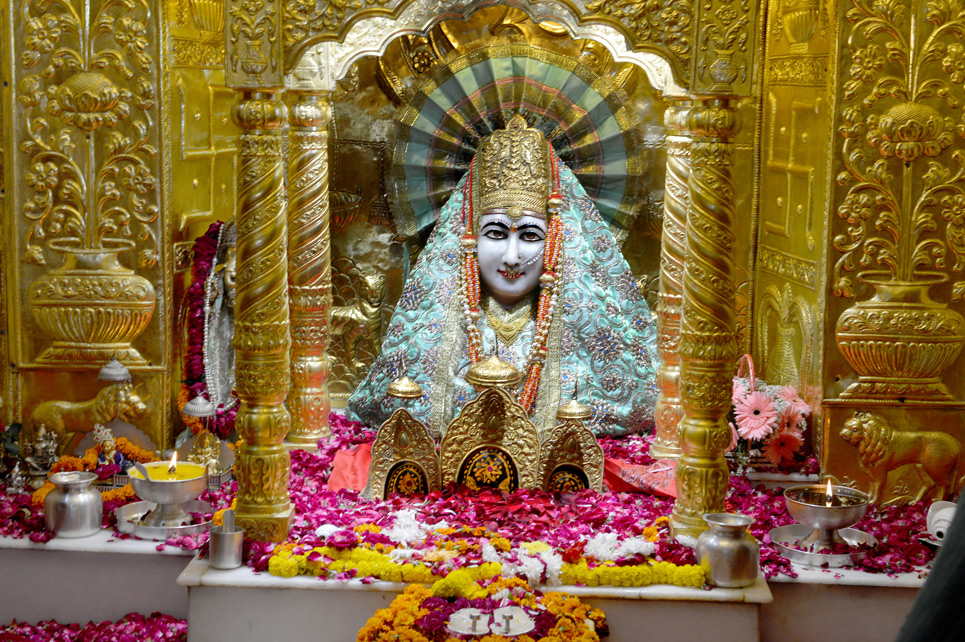Nestled in the foothills of the Shivalik mountain range, the Mata Mansa Devi Temple stands as a beacon of devotion and spirituality in the Panchkula district of Haryana, India. This Hindu temple, dedicated to goddess Mansa Devi, a form of Shakti, is a place of worship and a symbol of cultural and historical significance.
The temple’s construction began under the patronage of Maharaja Gopal Das Singh of Mani Majra, who was enthroned in 1783. Between 1811 and 1815, he built the main temple dedicated to Shri Mansa Devi.
After India gained independence, the princely states, including Manimajra, merged into the Patiala and East Punjab States Union (PEPSU). With the end of royal patronage, the Mata Mansa Devi Temple fell into neglect. The appointed pujaris, or temple priests, struggled to maintain the temple and provide adequate facilities for the devotees. The temple’s condition deteriorated significantly, lacking proper arrangements for the influx of pilgrims, especially during the Navratra melas.
Recognizing the temple’s deteriorating state, the Government of Haryana intervened and established the Shri Mata Mansa Devi Shrine Board (SMMDSB) in 1991. This move aimed to restore and manage the temple complex more effectively. Under the SMMDSB, significant improvements were made, including infrastructure development, better management, and enhanced facilities for the devotees. The board also took over the management of the nearby Chandi Mandir, named after the goddess Chandi.
The Mata Mansa Devi Temple complex consists of three main temples, each with its unique architectural charm. The oldest and main temple, built by Maharaja Gopal Das Singh, showcases thirty-eight panels of exquisite wall paintings, floral designs, and intricate carvings on the ceilings and arches. These artistic elements reflect the rich cultural heritage and devotion embedded in the temple’s history.
The Patiala Shivalaya temple, constructed by Maharaja Karam Singh, is another architectural marvel within the complex. Its walls and ceilings are adorned with beautiful paintings and designs, adding to the spiritual ambiance of the place. The Yagya Shala, a sacred area for performing rituals, and a revered peepal tree further enhance the temple’s spiritual significance.
The Mata Mansa Devi Temple is renowned for its grand Navratra melas, held twice a year during the Chaitra and Ashvin months. These nine-day festivals attract millions of devotees from across the country, transforming the temple complex into a vibrant hub of spirituality and devotion. The Shardiya Navratra Mela, held in Ashvin (September-October), and the Chaitra Navratra Mela, held in Chaitra (March-April), are marked by elaborate rituals, cultural performances, and fervent prayers.
During these melas, the temple remains open from 5 a.m. to 10 p.m., with special arrangements made for the devotees’ comfort. Temporary accommodations, medical facilities, security measures, and sanitation services are provided to ensure visitors’ smooth and safe experience. The Shrine Board’s meticulous planning and management contribute to the success of these large-scale events.
Mansa Devi Mandir Chandigarh
The Mansa Devi Mandir Chandigarh is often thought to be in Chandigarh, but it’s actually in Panchkula, Haryana. The temple is very close to Chandigarh—about 2-3 kilometers away. This means driving from the temple to Chandigarh only takes a few minutes. Many people from all over India visit the temple, not realizing it’s just outside Chandigarh. So, while it’s near Chandigarh, the temple itself is in Panchkula.
Mata Mansa Devi Story
In the lush Shivalik Hills, a curious and sacred story unfolds. Every morning, a gentle cow made her way up the hill to offer milk at three special stones, known as Pindies, placed on a hilltop. Local residents noticed that these stones seemed to hold a divine presence. It was soon discovered that the stones were believed to be the forehead of Shri Sati, a revered figure in Hindu mythology.
Inspired by this divine revelation, Maharaja Gopal Singh of Manimajra decided to build a grand temple on this spot. Between 1811 and 1815, he constructed the Mata Mansa Devi Temple at the base of the Shivalik Hills in the village of Bilaspur, Panchkula district. Nearby, about 200 meters from the main temple, Sh. Karam Singh, the Maharaja of Patiala, built another temple in 1840.
The temples initially enjoyed the patronage of the Manimajra State. However, when the princely states merged into Pepsu, the support for these temples ended. As a result, the temples fell into neglect. The Raja of Manimajra appointed a pujari, or caretaker, known as ‘khidmatuzar,’ to manage the temple and worship the deity. But after the merger, these pujaris had to handle everything on their own. They struggled to maintain the temple and cater to the pilgrims, causing the temple’s condition to worsen over time.
Legend has it that the Mata Mansa Devi Temple was built at the spot where the next part of Sati Mata’s head fell. Originally, it was known as the temple of Mata Sati. According to tradition, King Gopaldas of Manimajra had a cave constructed from his fort to the temple. This cave, about three kilometers long, allowed him and his queen to visit the temple daily. The legend says that the temple’s cupboard, which held sacred offerings, would only open when the king was present. If he did not come, the cupboard remained shut.
Today, the Mata Mansa Devi Temple is nestled in the foothills of the Shivalik range, spanning about 100 acres near Bilaspur. It remains a major shrine dedicated to Shakti, the divine feminine energy in Hinduism. The temple is adorned with beautiful wall paintings and floral designs, reflecting its historical and artistic heritage. A sacred tree in the temple complex is a focal point for devotees who tie sacred threads, hoping their prayers will be answered.
Constructed in the early 19th century, the temple is now a celebrated heritage site, maintained by the government. Its vibrant atmosphere and rich legends continue to attract pilgrims and visitors, keeping the ancient traditions and stories alive.



